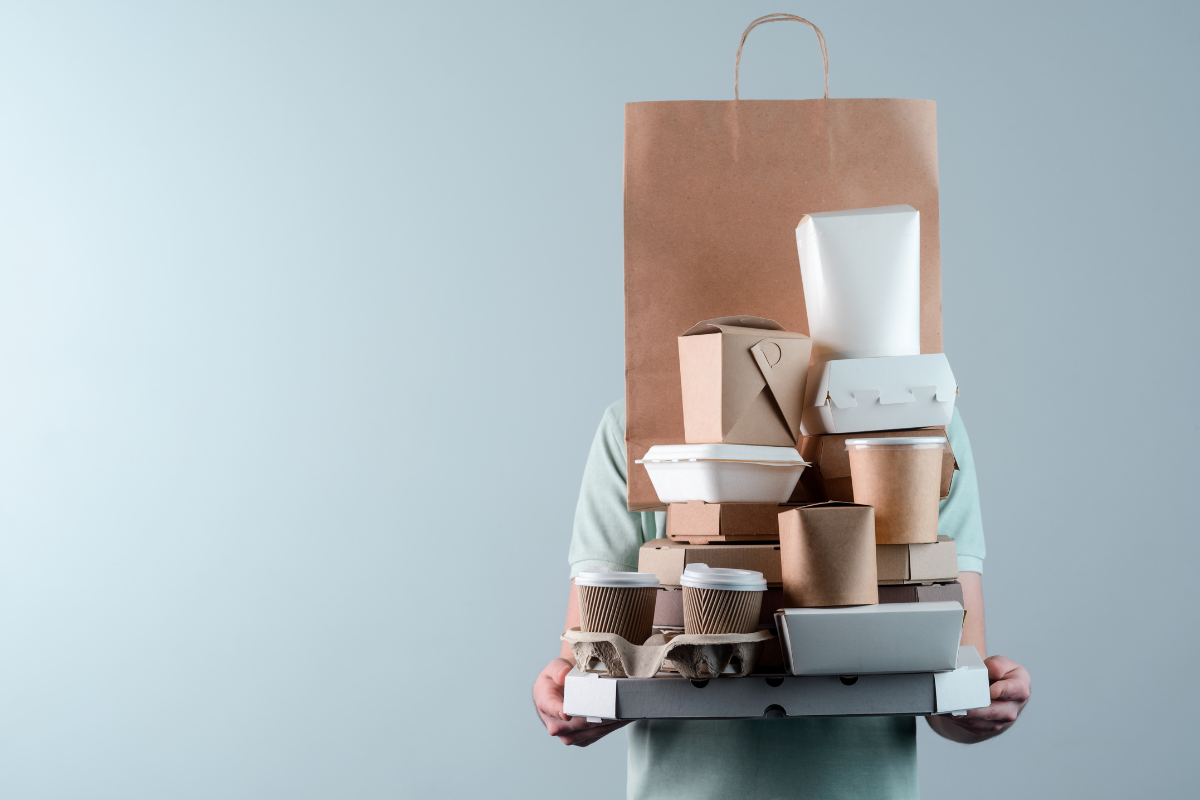
The tool looks at size, material type and other attributes to determine whether a given package is compatible with the current U.S. residential recycling system. | Yuriy Golub/Shutterstock
A recently launched design feedback resource from the Recycled Materials Association has three key objectives: to decrease contamination at MRFs, increase quality of bales sent to paper mills and provide immediate feedback to producers about the recyclability of their packaging.
ReMA gave an overview of the Fiber Recycling Readiness Tool during an Aug. 14 webinar, describing it as a way to help companies make recycling-friendly, consumer-facing packaging choices in fiber. The project is in the same vein as ReMA’s annual Design for Recycling Award, which recognizes a package that stands out for its use of recycled materials, ease of acceptance and other recycling-positive attributes.
Brands can input information about a given package, and the tool looks at the size, format and material composition of that package, said Leonard Zeid, president of the recovered fiber brokerage at Midland Davis and chairman of the ReMA working group that developed the tool. It considers those specifications to determine whether the package would be accepted in a U.S. residential recycling program, sorted properly at a MRF and accepted into a fiber bale for sale to a paper mill.
Zeid connected the project to the ongoing trend of brands “moving away from plastic packaging and wanting to do more fiber-based packaging.”
Bret Biggers, senior economist at ReMA and staff liaison to the working group, added that “there was a brand that had come to us also and said that they’re thinking of changing from plastic to paper, and they wanted to know whether it was recyclable, whether it would go through the current infrastructure.”
In addition to Zeid, the working group included representatives from across the recycling industry, including MRF operators, haulers, paper mills and packaging firms as well as industry groups. The working group hired consulting firm Moore & Associates to survey MRFs about the volumes of fiber packaging going through their doors, how that packaging moves through the MRF, what paper sorting equipment is in use and coming soon, and what design changes could improve things from a MRF perspective.
In the end, the work resulted in a research-based tool for packaging producers to determine whether a given package is “compatible with the current U.S. recycling system.” The word “current” is an important point, Zeid noted.
“As things change, capabilities change, technology changes, this tool will be updated over time,” he said. He said the working group wants feedback from users, to help guide future updates to the tool.
David Brabham, director of sustainability strategy at Georgia-Pacific and a member of the ReMA working group, offered a demonstration of how a company would use the tool. It walks the user through a handful of questions with dropdown menus, covering the packaging’s purpose, its general category, whether it fits into an existing grade in the ISRI Scrap Specifications Circular, and more granular details about packaging features like coatings and inks, adhesives and similar attributes.
In the end, the tool provides the user with a result highlighted in green, indicating the package meets current recyclability standards, or yellow or red, indicating the package does not fit recyclability, with recommendations on what could be changed and how close it is to being accepted.
“It’s a pretty efficient tool for screening new packaging that packaging designers are looking to put into the marketplace, early on in that process,” said Brabham, who added that GP had a particular interest in participating in this process.
“With Georgia-Pacific producing paper, also producing packaging, and Georgia-Pacific Recycling both buying and selling recycled fiber, and then we have paper mills that utilize recycled paper – supporting initiatives that help paper-based packaging flow through the entire recycling system is important to us,” Brabham said.

